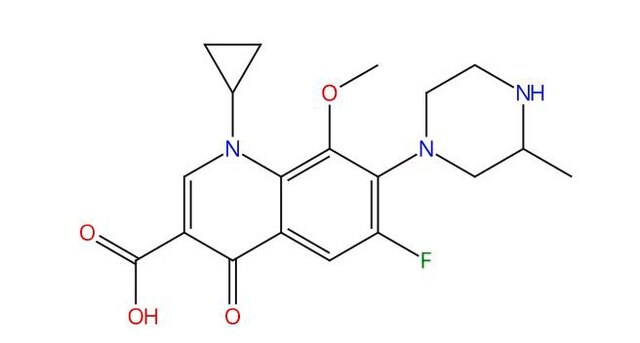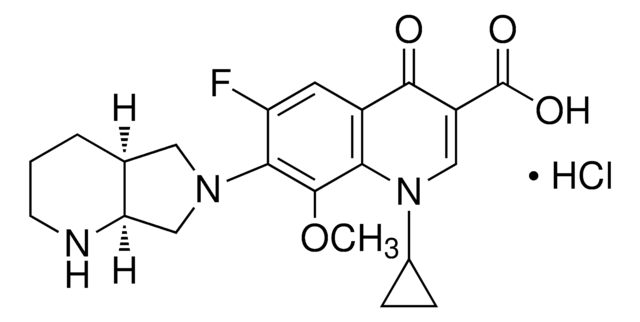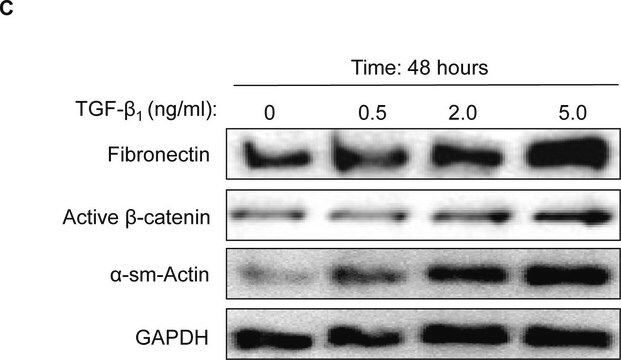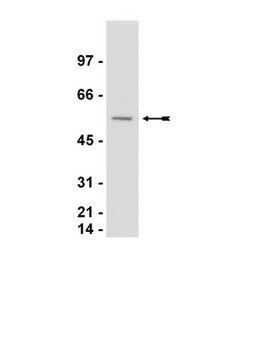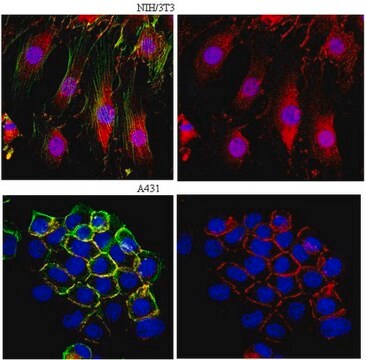おすすめの製品
由来生物
rabbit
品質水準
抗体製品の状態
affinity purified immunoglobulin
抗体製品タイプ
primary antibodies
グレード
Powered by Bethyl Laboratories, Inc.
化学種の反応性
human, mouse
テクニック
ChIP: 4-30 μg
immunohistochemistry: 1:100- 1:500
immunoprecipitation (IP): 2- 5 μg/mg
western blot: 1:2,000- 1:10,000
アクセッション番号
NP_001895.1
アプリケーション
research pathology
輸送温度
wet ice
保管温度
2-8°C
ターゲットの翻訳後修飾
unmodified
遺伝子情報
rabbit ... Beta-catenin(1499)
免疫原
The epitope recognized by PLA0230 maps to a region between residue 760 and 781 of human beta-catenin using the numbering given in entry NP_001895.1 (GeneID 1499).
物理的形状
Tris-buffered Saline containing 0.1% BSA containing 0.09% Sodium Azide
その他情報
Beta-catenin plays an integral role in the Wnt signaling pathway and is critical to morphogenic signaling and body axis specification. Beta-catenin exists in complexes with cadherins, transmembrane proteins that mediate cell adhesion. When Wnt-signaling proteins bind their receptors, beta-catenin is stabilized and accumulates in the cell. Translocation of stabilized beta-catenin allows its association with transcription factors and the activation of specific gene expression.
免責事項
Unless otherwise stated in our catalog or other company documentation accompanying the product(s), our products are intended for research use only and are not to be used for any other purpose, which includes but is not limited to, unauthorized commercial uses, in vitro diagnostic uses, ex vivo or in vivo therapeutic uses or any type of consumption or application to humans or animals.
適切な製品が見つかりませんか。
製品選択ツール.をお試しください
保管分類コード
10 - Combustible liquids
引火点(°F)
Not applicable
引火点(℃)
Not applicable
適用法令
試験研究用途を考慮した関連法令を主に挙げております。化学物質以外については、一部の情報のみ提供しています。 製品を安全かつ合法的に使用することは、使用者の義務です。最新情報により修正される場合があります。WEBの反映には時間を要することがあるため、適宜SDSをご参照ください。
Jan Code
PLA0230-100UL-KC:
PLA0230-100UL:
試験成績書(COA)
製品のロット番号・バッチ番号を入力して、試験成績書(COA) を検索できます。ロット番号・バッチ番号は、製品ラベルに「Lot」または「Batch」に続いて記載されています。
Elsenoor J Klaver et al.
JCI insight, 6(24) (2021-11-17)
The genetic bases for the congenital disorders of glycosylation (CDG) continue to expand, but how glycosylation defects cause patient phenotypes remains largely unknown. Here, we combined developmental phenotyping and biochemical studies in a potentially new zebrafish model (pmm2sa10150) of PMM2-CDG
Naushad Ali et al.
Scientific reports, 10(1), 10578-10578 (2020-07-01)
Chronic liver injury is a risk factor for cirrhosis and hepatocellular carcinoma (HCC). The molecular mechanisms that regulate the decision between normal injury repair and neoplastic initiation are unclear. Doublecortin-like kinase 1 (DCLK1), a tumor stem cell marker, is induced
Altered expression of noncanonical Wnt pathway genes in paediatric and adult adrenocortical tumours.
Livia M Mermejo et al.
Clinical endocrinology, 81(4), 503-510 (2014-04-11)
The role of planar cell polarity (Wnt/PCP) and calcium-dependent (Wnt/Ca) noncanonical Wnt pathways in adrenocortical tumours (ACTs) is unknown. To investigate the gene expression of Wnt/PCP and Wnt/Ca pathways and its association with TP53 p.R337H and CTNNB1 mutations in paediatric
Catherine M Willis et al.
PloS one, 9(8), e103966-e103966 (2014-08-05)
Expression of the glycosaminoglycan chondroitin sulfate-E (CS-E) is misregulated in many human cancers, including breast cancer. Cell-surface associated CS-E has been shown to have pro-tumorigenic functions, and pharmacological treatment with exogenous CS-E has been proposed to interfere with tumor progression
ライフサイエンス、有機合成、材料科学、クロマトグラフィー、分析など、あらゆる分野の研究に経験のあるメンバーがおります。.
製品に関するお問い合わせはこちら(テクニカルサービス)